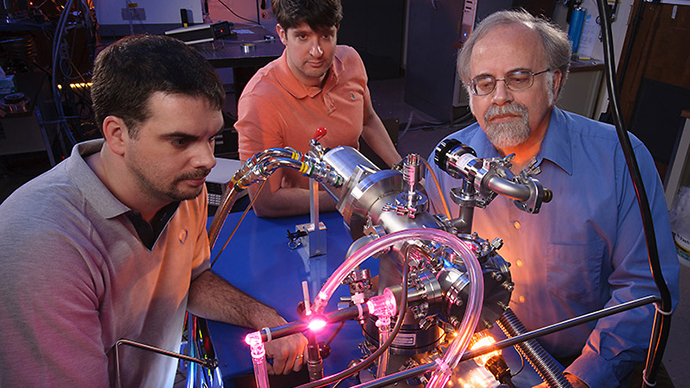NASA scientists reproduce 3 key life components

Trying to get to the bottom of life, NASA scientists have reproduced cytosine, thymine, and uracil - three key components of life found in both DNA and RNA in a laboratory in Moffett Field, California.
“We have demonstrated for the first time that we can make uracil, cytosine, and thymine, all three components of RNA and DNA, non-biologically in a laboratory under conditions found in space,” said Michel Nuevo, research scientist at NASA’s Ames Research Center.
Scientists in space-like conditions lab deposited an ice sample containing pyrimidine on a cold substrate to discover that such approach produces these essential ingredients of life. The molecule pyrimidine is found in meteorites, although scientists still do not know its origin.
READ MORE: ‘Fluoride in water could cause depression, weight gain’ – scientists
By exposing, pyrimidine, a ring-shaped molecule made up of carbon and nitrogen to high-energy ultraviolet (UV) photons from a hydrogen lamp, scientists were able to break chemical bonds in the ice's molecules into fragments. The broken fragments then reassembled themselves in such a way as to form new compounds, such as uracil, cytosine and thymine.
NASA also discovered that pyrimidine is much less vulnerable to destruction by radiation if it’s frozen in ice mostly consisting of water, but containing ammonia, methanol or methane.
“The chemistry of ice exposed to ultraviolet radiation may be an important linking step between what goes on in space and what fell to Earth early in its development,” said Christopher Materese, researcher at NASA involved in the experiments, adding that the question of life on Earth is still unanswered.
READ MORE: Antibiotics cause dangerous bacteria communities to appear, study says
“Nobody really understands how life got started on Earth. Our experiments suggest that once the Earth formed, many of the building blocks of life were likely present from the beginning. Since we are simulating universal astrophysical conditions, the same is likely wherever planets are formed,” said NASA researcher Scott Sandford.












